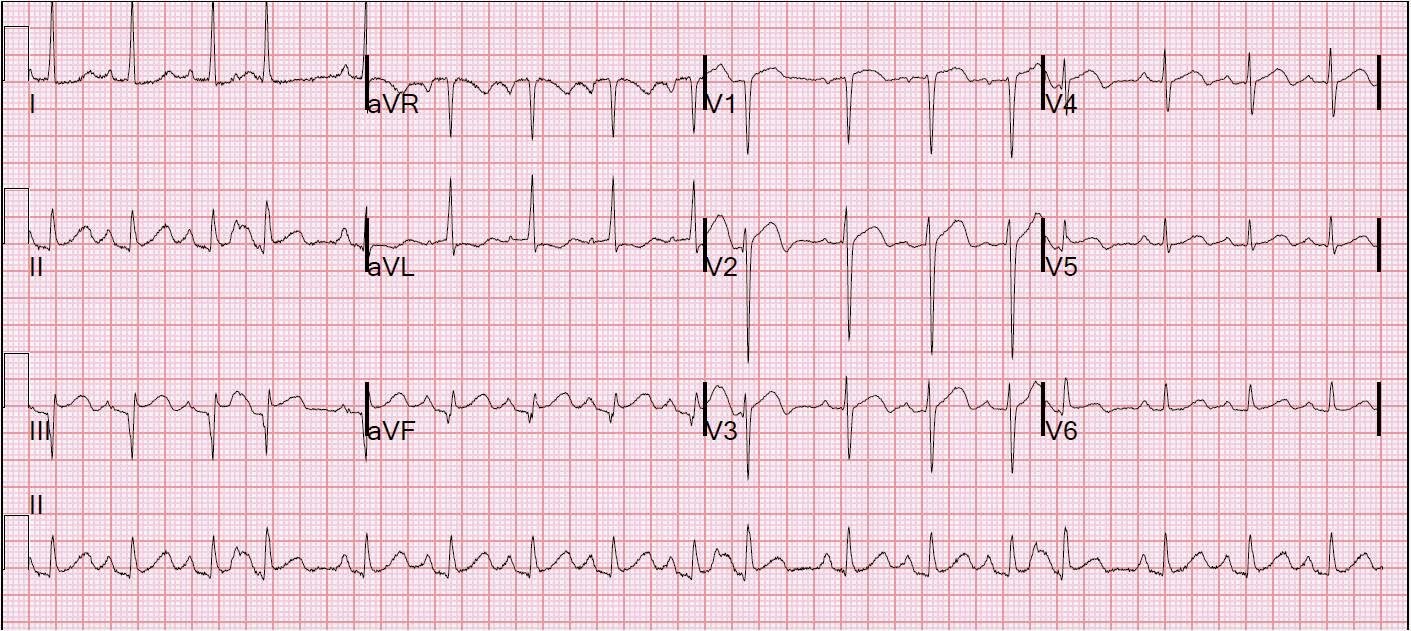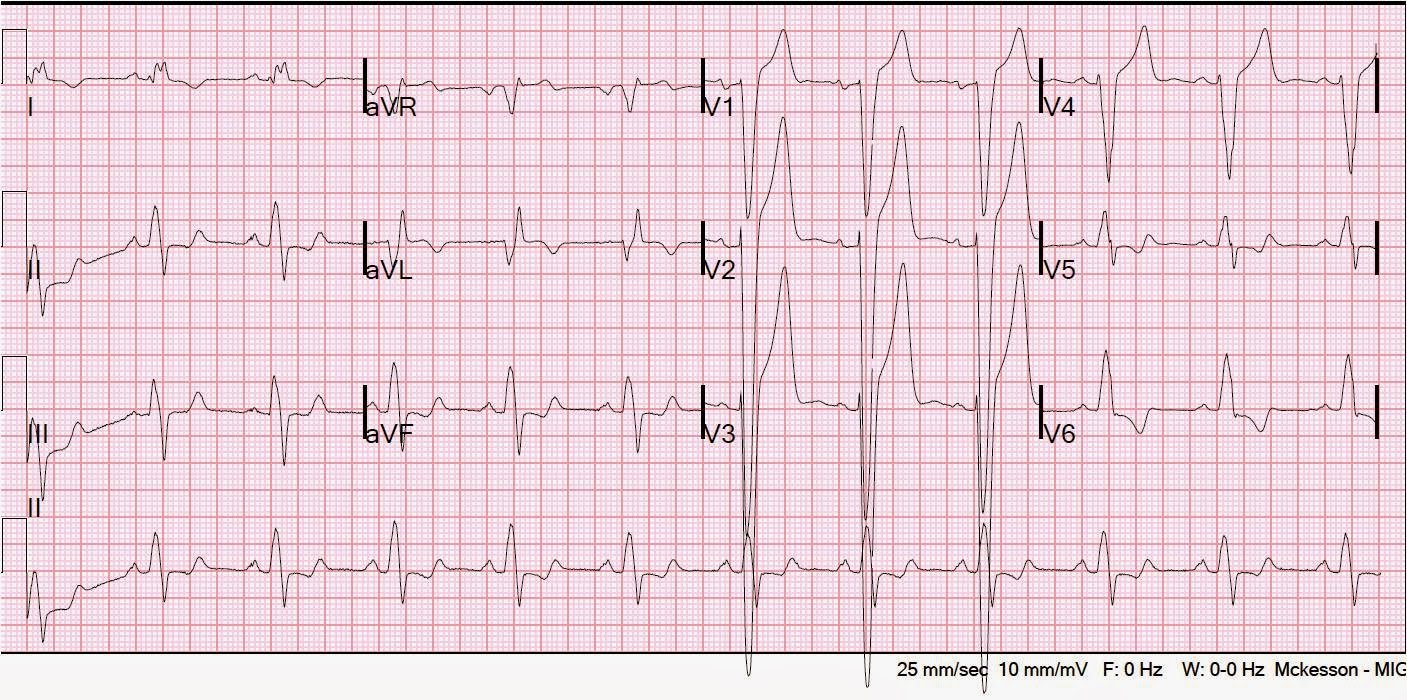This patient presented after dialysis with weakness and reproducible chest pain.
 |
| Sinus rhythm with a normal QRS. The QT is prolonged and this is due to a long ST segment. There are prominent U-waves, best seen in II, V2, and V3. |
This patient presented in shock with GI bleeding, cirrhosis, and a lactate of 33.
These are both cases of simultaneous hypokalemia (U-waves and ST depression) and hypocalcemia. In the first case, the K was 3.1 and Ca was 3.8 ionized. In the second case, the K was 2.9 and Ca 6.3 nonionized. Hypokalemia gives a prolonged QT, scooped ST depression, prominent U-waves, and often a generally wavy appearance to the ECG. Hypocalcemia gives a long ST segment resulting in a long QT.
In the second case, troponin I was negative. ST depression was not due to NSTEMI. ST depression with a normal QRS (“primary”) is due to ischemia, hypokalemia, digoxin, and an abnormal baseline (unknown etiology). Of course there is also “secondary” ST depression, secondary to an abnormal QRS such as LVH, BBB, Brugada, WPW, etc.





Very interesting! In the second case the T waves look peaked, which I wouldn't necessarily expect in hypokalemia. Granted it looks localized. The long QT in that one also makes U-wave recognition difficult, I needed your hints to "see" it.
Was the second after blood transfusion? All that citrate…
No, it was the initial ECG before transfusion